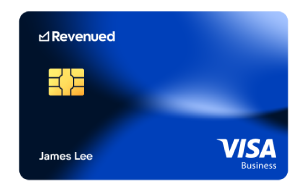Free Guide: Build Your Yearly Budget Based on Cash Flow Projections
Free Guide: Build Your Yearly Budget Based on Cash Flow Projections
Figuring out your cash flow situation is a key component of establishing the financial health of your small business. If you have your numbers locked down, you’ll find that it will often prove instrumental in securing a business loan and building trust in your venture.
However, in addition to building investor confidence, creating a cash flow projection for your business can influence your annual budget and leave you with a better idea what to expect going forward. With this knowledge, you can plan out your business activity and maximize the long-term profitability of your business.
For those new to the process, a cash flow projection is exactly what it sounds like: When calculated accurately, this figure provides an estimate of the cash your business will have available over a certain period of time. For simplicity’s sake, this usually centers on year-long periods, but it can be broken down further depending on your specific needs. In any case, cash flow projections can reveal a great deal about your upcoming financial picture. To help you make the most of your calculations, here’s a rundown on how you can use cash flow projections to build a strong annual budget.
How Cash Flow Projections Work
While cash flow projections are far from infallible, they can go a long way in preparing you for what may lie ahead. In any successful business, you need to maintain a positive cash flow — meaning that more money comes in than exits your business account. This might take the form of cash sales, your own investment into the business or any outstanding payments that you were able to collect in the given timeframe.
Whatever the case, this total coming in should always outweigh the outward cash flow. These outflows are comprised primarily of any goods or services purchased on behalf of your business, as well as other expenses like loan payments, wages and taxes. Depending on your preferences, you might opt to break down these cash flow projections as often as monthly, especially if your business is new with a more uncertain financial road ahead of it. (As you progress, you can shift this frequency however you see fit.)
Of course, the tricky part in maintaining this balance is determining the incoming part of your cash flow. That figure and its accuracy will no doubt sharpen over time, but you should be able to at least deduce the outgoing side fairly easily early on. After all, both monthly operational expenses and more erratic ones like insurance payments and taxes should be integral parts of your business plan.
As for your income, that’s where research comes into play. Especially in today’s age of technology, you should have no problem connecting with others in your industry and performing thorough market research. From there, you’ll be able to create a variety of scenarios that you can compare and contrast to your expense calculations. Since we’re on the topic, let’s discuss how you can calculate cash flow projections for your business.
Creating Cash Flow Projections
No matter what, your business will face a natural ebb and flow of cash; what makes a difference is how well you anticipate it. Remember, your cash flow projections will probably never be perfectly accurate. So you’ll have to accept that notion before you even start the calculation process. But when done right, your cash flow projection can be a valuable tool in formulating your budget for the coming year.
When you do begin creating your cash flow projection, the first place you’ll want to start is with the operating cycle. Remember earlier when we mentioned how your expenses need to take into account bills, insurance and taxes in addition to monthly items like goods, services, marketing, and salaries? Well, that’s a key part of figuring out what your cash flow will be on a monthly basis. Once your projection is complete, it can also prevent you from running out of funds in a given month.
In many cases, all it takes is a simple spreadsheet to keep track of the ins and outs of your business — you can even find templates online to aid in setup. Though you’ll want to take care on both the cash-in and cash-out sides, the former should take up the majority of your focus due to its unpredictability. In fact, you might want to create some extreme examples of how your income might shift and then work from a conservative assumption of your finances.
Once you have clarity on any potential obstacles, you’ll be able to take precautions and perhaps even shore up your business funding ahead of these rockier periods. Moreover, when you make cash flow projections a routine part of your business planning, you’ll be better equipped to manage your operation long-term and optimize your finances. Your accounting process is the bedrock of your success, and cash flow projections are one surefire way to boost its effectiveness.
Cash Flow Projections and Your Budget
Your cash flow projections and your budget are both indicative of how you operate your business. But their connection is actually way more fundamental than that. When you develop a deeper understanding of your business’s cash flow cycle, these predictions work in tandem to guide your financial decision-making and inform your budgetary expectations. If planning ahead is the act of any sharp business owner, then cash flow projections and annual budgets are the tools by which this objective is achieved.
Without a sense of what the future holds, creating a budget is more than ill-advised. In fact, this can wreak havoc on your business prospects, since your budget will have little tangible relevance to your business operations at all. In contrast, a cash flow projection enables you to build your budget piece by piece, allowing you to proceed with your business in a far more confident manner.
Naturally, we’re not expecting you to nail down every bump in your business’ road for the year ahead — that would be impossible. But cash flow projections operating from an informed, calculated stance of what your business is most likely to bring in against its operating budget can truly be the lynchpin on which your future profitability lies. And as you may have realized by now, they’re unquestionably assets when it comes to compiling your budget.
Cash flow projection is more than just a tool that benefits your business internally, though. Having such fine-tuned budgetary figures at your disposal will play a vital role in the funding you’re able to attract and in some cases even the potential growth of your operation. Just as sufficient cash flow is an invaluable part of any small business, so are its projections a key ingredient in the recipe for cooking up a budget that you and your team can proudly stand behind as your plot out your growth strategy.
RELATED ARTICLES
Revenued Business Flex Line vs Ecommerce Revenue Based Financing
Learn MoreRevenued Flex Line Pricing vs. (MCA): A Comparative Analysis
Learn MoreWhat is My Business’ Credit Utilization Ratio?
Learn MoreWhy is Cash Flow Important to Your Business?
Learn More
Boost your spending power with the Revenued Business Card
Only pay for what you use at gas stations, hotels, supply stores, supermarkets and more.
Take control with the Flex Line
Check your available balance online and request a cash draw with the tap of your finger, anytime.

